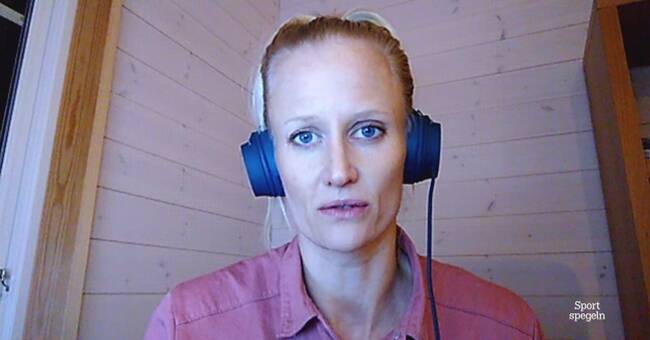The Swedish Public Health Agency recommends that children and young people have physical activity for at least one hour a day, heart rate-enhancing exercise at least three times a week, as well as activity for bones and muscles.
But research shows that only 44 percent of boys and 22 percent of girls reach that level, and 14 percent of girls in high school.
Carolina Klüft is the operations manager for Generation Pep, an organization that works for children and young people's health.
She is worried that the pandemic will make even more people stop moving.
- We are facing a major challenge.
Stopping the spread of infection is of course most important, but it is of course problematic because even before the pandemic we had children and young people who did not live up to the recommendations regarding physical activity.
It is not just sports, but from a larger perspective that children and young people are becoming increasingly sedentary.
"Very worrying"
Klüft emphasizes that it is a great responsibility that the whole of society must now take on in order not to incur a large "health debt".
- This has consequences for both individuals and society at large.
It has become even more profound during the pandemic and it is of course very worrying and regrettable that so many young people today are losing their habits, even though we know why.
But it will be a challenge ahead and it can be a big health debt that we need to take with us.
"We must tear down those obstacles"
Even before the pandemic, there were health gaps between children and young people depending on the socio-economic conditions in which they grow up, what do you think about that development now?
- Unfortunately, in many studies it looks like the health gap is getting worse, it is incredibly unfortunate.
We must all take responsibility now in the future.
During a pandemic, those who already have more difficulty getting into activity are most often affected.
We must tear down those obstacles so that we get a shift for all children and young people to more activity.
Then there needs to be accessibility - association life, halls, green areas, places, the school, leaders, teachers and of course decision-makers.
We all have a responsibility and must take this seriously.
- All children have the right to good health.
Society must address it now, if we are not to have a society in the future where people do not feel well - both physically and mentally.
You want to see a national action plan, what would it contain?
- An action plan must contain common goals that someone must take responsibility for at the national level, it will of course be decision-makers.
Which follows up the goals so that we find structural changes that give all children and young people the opportunity for physical activity and better eating habits.
It does not exist today, and then it falls a little between the chairs.
SEE MORE: "We can be in school, so why shouldn't we be allowed to train?"
Javascript is disabled
Javascript must be turned on to play video
Read more about browser support
The browser is not supported
SVT does not support playback in your browser.
We therefore recommend that you switch to another browser.
Read more about browser support
"We can be in school, so why shouldn't we be allowed to train?"
Photo: SVT

